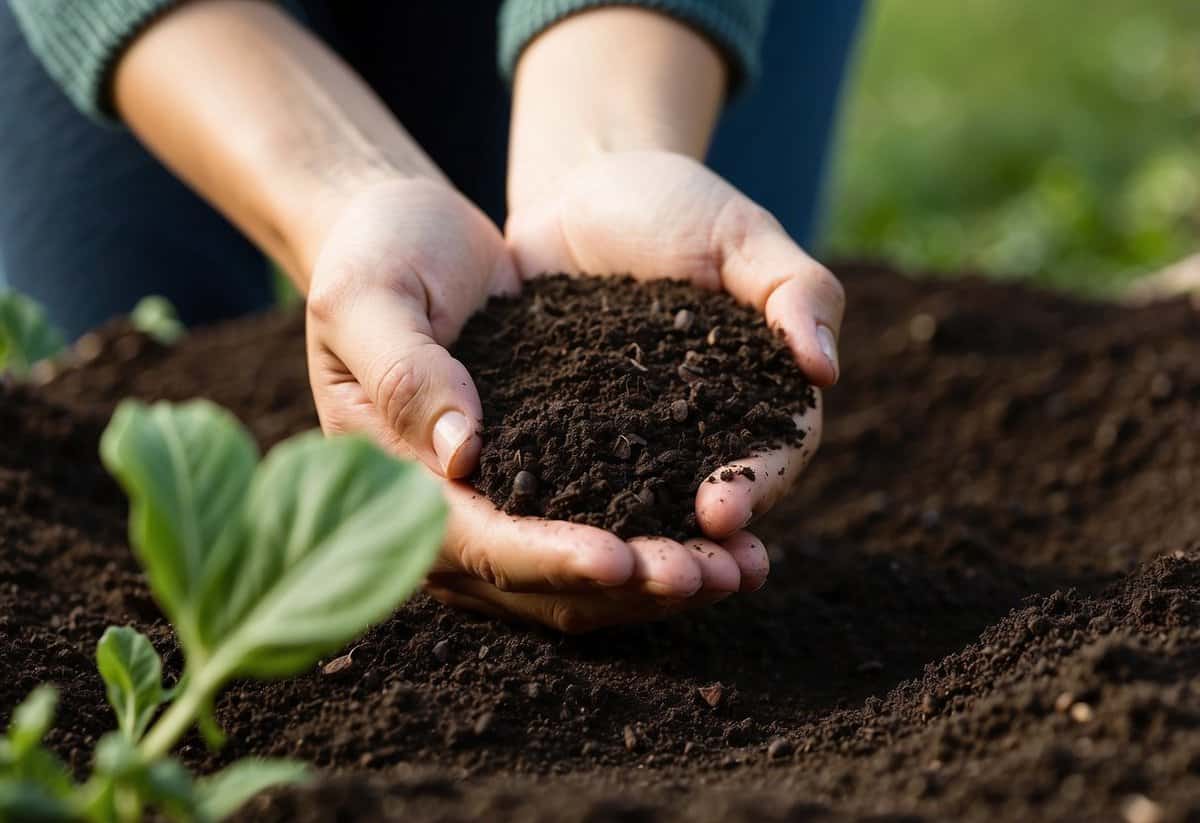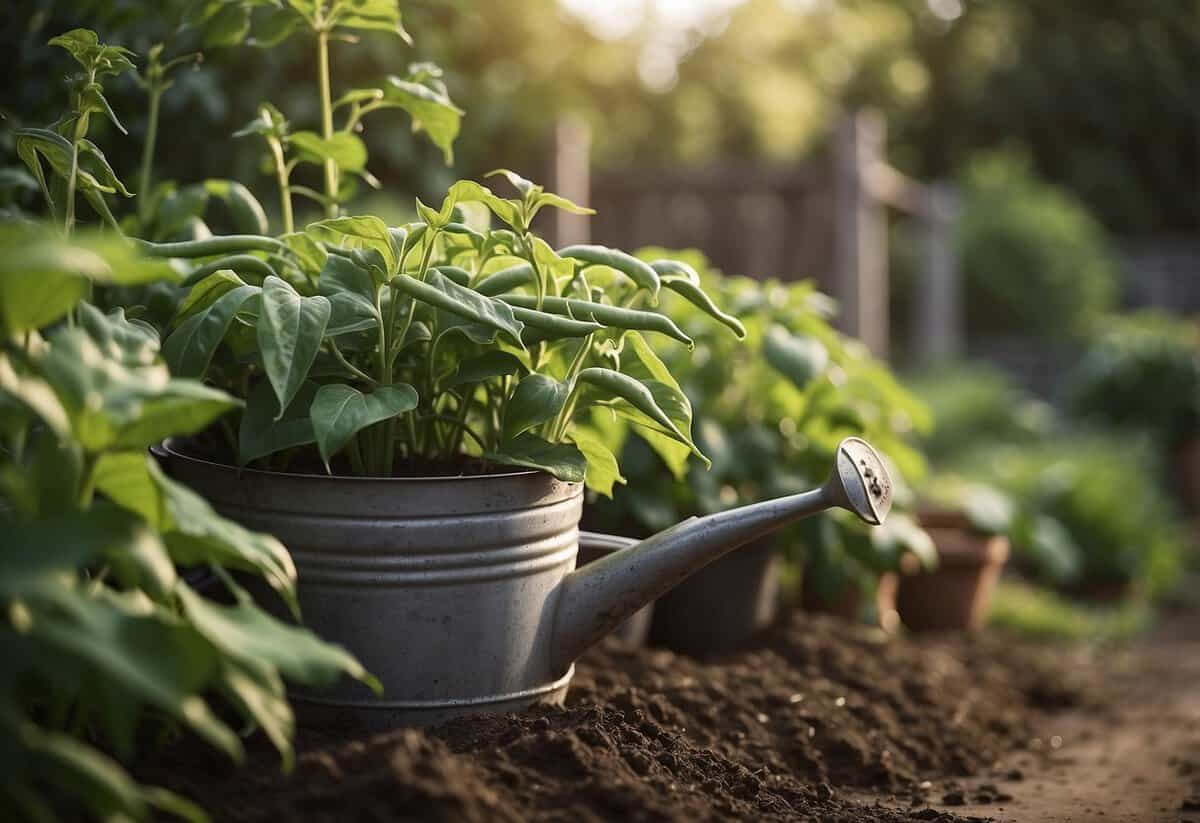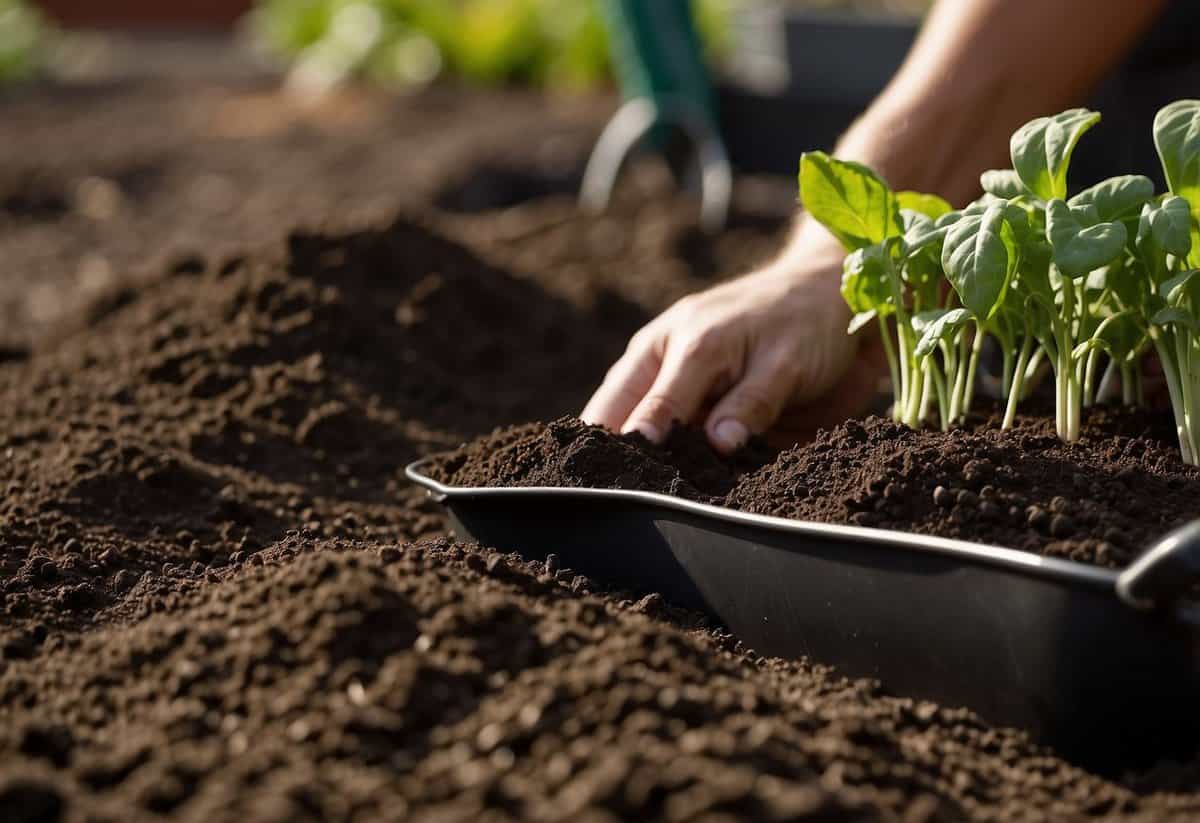Green Beans Garden Tips: Easy Steps for a Bountiful Harvest
Growing green beans in your garden can be both rewarding and enjoyable. These tender vegetables, also known as string beans or snap beans, are relatively easy to cultivate and can produce a large yield with proper care. Whether you choose bush beans or pole beans, each type has its unique benefits and can thrive in most climates.

Are you ready to learn how to grow delicious green beans in your backyard? From planting to harvesting, we’ll guide you through the essential tips and tricks to ensure a bountiful green bean crop. Let’s get started on your journey to fresh, homegrown green beans straight from your garden!
1) Start with Quality Seeds

For the best results, always start with high-quality seeds. Look for reputable brands known for good germination rates.
Check the packaging date to ensure the seeds are fresh. Old seeds might not sprout well.
Choose seeds that are specific to your climate. This helps them grow better in your garden. Avoid damaged or discolored seeds, as they may not be healthy.
2) Choose the Right Planting Time

Timing is crucial when planting green beans. You should plant your seeds after the last frost of the season. The soil needs to have warmed up to at least 48°F (9°C) for the seeds to germinate properly.
Planting in late spring usually works well. This ensures that your plants will grow in the warmest part of the year, giving them the best chance to thrive.
3) Soil preparation with compost

Adding compost to your soil before planting green beans is essential. Compost provides necessary nutrients and improves the soil’s structure. This helps your plants grow strong and healthy.
To get started, mix compost into the top 6 inches of soil. This will aerate the soil and ensure proper drainage.
It’s important to make sure the soil is not too soggy. Green beans prefer well-drained soil that retains some moisture but doesn’t stay waterlogged. Adding compost balances the soil’s texture.
Don’t forget to clear any old plant debris before you start. Happy planting!
4) Use mulch to retain moisture

Using mulch in your green bean garden can help keep the soil moist. Mulch reduces the amount of water that evaporates from the soil surface.
Organic mulches such as straw, grass clippings, or shredded leaves work well. Spread a layer of mulch around your green bean plants, but keep it a few inches away from the plant stems to avoid rot.
Mulch not only retains moisture but also keeps the soil temperature stable. This is especially important during hot summer months. Additionally, mulch can help control weed growth, giving your green beans less competition.
5) Regular Watering Schedule

Water your green beans in the morning. This helps the plants absorb water before it gets too hot and the water evaporates.
It’s best to water at the base of the plants rather than overhead. This prevents the leaves from getting wet, reducing the risk of disease.
Check the soil regularly. If it’s dry an inch beneath the surface, it’s time to water. Keeping the soil consistently moist ensures healthy growth.
6) Companion Planting Techniques

Planting beans with other vegetables can be very beneficial. For example, basil is an excellent companion for beans. It helps repel pests and can improve the flavor of your beans.
You can also plant beans with crops like broccoli and Brussels sprouts. They create a healthy, diverse garden environment that helps all plants grow better.
Adding pumpkins around your beans works well, too. The sprawling vines keep pests away and cover the ground to prevent weeds. This makes your garden easier to maintain.
7) Proper spacing for plants

For bush beans, plant each seed about 2 inches apart. Keep rows around 18 to 24 inches apart. This gives enough room for growth.
If you are growing pole beans, they need 4-6 inches between plants and about 30-36 inches between rows.
Proper spacing helps each plant get enough sunlight and nutrients. This ensures your green beans grow strong and healthy.
8) Support structures for climbing

Using support structures helps your green beans grow tall and healthy. One popular method is a green bean teepee. It’s fun and lets kids play inside!
You can also try a double row setup. Plant two rows about one foot apart and tie the canes at the top with string, creating a sturdy frame.
A bamboo bean trellis is another eco-friendly option. Just use bamboo poles and garden twine to build a simple, sustainable support.
These structures ensure your beans stay upright and easily accessible. Happy gardening!
9) Pest Control Techniques

To keep your green bean plants healthy, you’ll need to handle pests early. Neem oil is a great option for many pests. It must be diluted and sprayed directly on the plants.
Insecticidal soap works well for larvae and small insects. Look for products ready to use, like the ones from Garden Safe.
Ensure any affected leaves are removed and destroyed to prevent the spread of pests.
For night-time pests like cutworms, you can place collars around the base of your plants to protect them. Regular checks are important to catch issues before they become big problems.
10) Harvesting tips

Harvest green beans in the morning when their sugar level is highest. The more you pick, the more beans will grow.
Look for pods that are firm and about as thick as a pencil. Keep an eye out for young and tender beans.
Harvest bush beans all at once, while pole beans can be picked throughout the season.
Preparing the Soil

To grow healthy green beans, you need to prepare your soil correctly. This involves ensuring the soil conditions are just right and making any necessary amendments based on soil tests.
Optimal Soil Conditions
Green beans thrive in well-drained soil with a pH between 6.0 and 7.0. Make sure the location you choose gets plenty of sunlight, at least 6-8 hours per day.
Loosen the soil to allow for root development. Use a garden fork or tiller to aerate and create a nice, crumbly texture. This will help the roots grow and improve water drainage.
If your soil is too heavy with clay, mix in some compost or well-rotted manure. This will enhance drainage and provide essential nutrients. Sandy soil can also benefit from organic matter to boost water retention and fertility.
Soil Testing and Amendments
Before planting, test your soil to check its nutrient levels and pH. You can buy a soil testing kit from a garden center or send a sample to a lab. This step is crucial to ensure your soil meets the needs of green beans.
Adjust the pH if needed. If the soil is too acidic, add lime. For alkaline soil, sulfur can help lower the pH.
Add fertilizers based on your test results. Green beans usually need a balanced fertilizer like 10-10-10. You can work this into the soil a few weeks before planting. Organic options like compost or aged manure are also great for enriching the soil.
By taking these steps, you’ll create the perfect foundation for growing robust and productive green bean plants.
Planting Green Beans

When planting green beans, choose the right variety based on your garden space and climate. Use proper planting techniques to ensure healthy growth and a good harvest.
Choosing the Right Varieties
There are two main types of green beans: bush beans and pole beans. Bush beans grow closer to the ground and typically mature faster. They are great for smaller spaces and usually produce beans all at once. On the other hand, pole beans require support structures and mature more slowly, but they produce beans throughout the growing season.
Bush beans usually mature in 50-55 days, making them a quick option. Pole beans take about 55-65 days or more to mature, depending on the variety. If you’re new to gardening or have limited space, bush beans might be easier to manage.
Planting Techniques
Plant green beans after the last frost when soil has warmed to at least 48°F (9°C). For bush beans, plant seeds about 1 inch deep and 2 inches apart. If growing in rows, keep rows about 18-24 inches apart.
Pole beans need a bit more planning. Plant them 1 inch deep and 3-4 inches apart around the base of a trellis or stakes. Ensure your support system is sturdy to hold the growing vines. For container gardening, use an 8-inch-deep container for one bush plant, or a 5-gallon pot for multiple plants.
Use a mix of potting soil and rich compost to provide nutrients. Water the seeds well and thin seedlings if they become crowded. By following these steps, your green beans will have a strong start.
Caring for Your Green Beans

To have healthy green beans, focus on proper watering and fertilizing. These steps will ensure your plants thrive and produce a good harvest.
Watering Tips
Green beans need consistent moisture to grow well. Water deeply to encourage roots to reach down into the soil. Aim to water your plants to a depth of about 1 to 2 inches whenever the top layer of soil feels dry.
It’s best to water in the early morning. This allows the foliage to dry out during the day, reducing the risk of disease. Use a soaker hose or drip irrigation to provide water directly to the soil. This method minimizes water loss through evaporation.
Avoid getting the leaves wet as much as possible. Wet leaves can lead to fungal infections. If you must use a sprinkler, do so at a time when the foliage can dry quickly.
Fertilizing
Fertilizing green beans isn’t complicated. Before planting, mix compost or well-rotted manure into the soil. This enriches the soil with nutrients. Green beans also benefit from a balanced fertilizer, such as a 10-10-10 mix. Apply this type of fertilizer according to package instructions.
Once the plants start to flower, you can give them a light boost with a liquid fertilizer. This helps the plants produce more beans. Be careful not to over-fertilize. Too much fertilizer can lead to lots of leaves but fewer beans.
Keep an eye on your plants. If they look pale or aren’t growing well, they might need more nutrients. Always test the soil if you suspect nutrient deficiencies. This helps you know exactly what’s needed rather than guessing.







